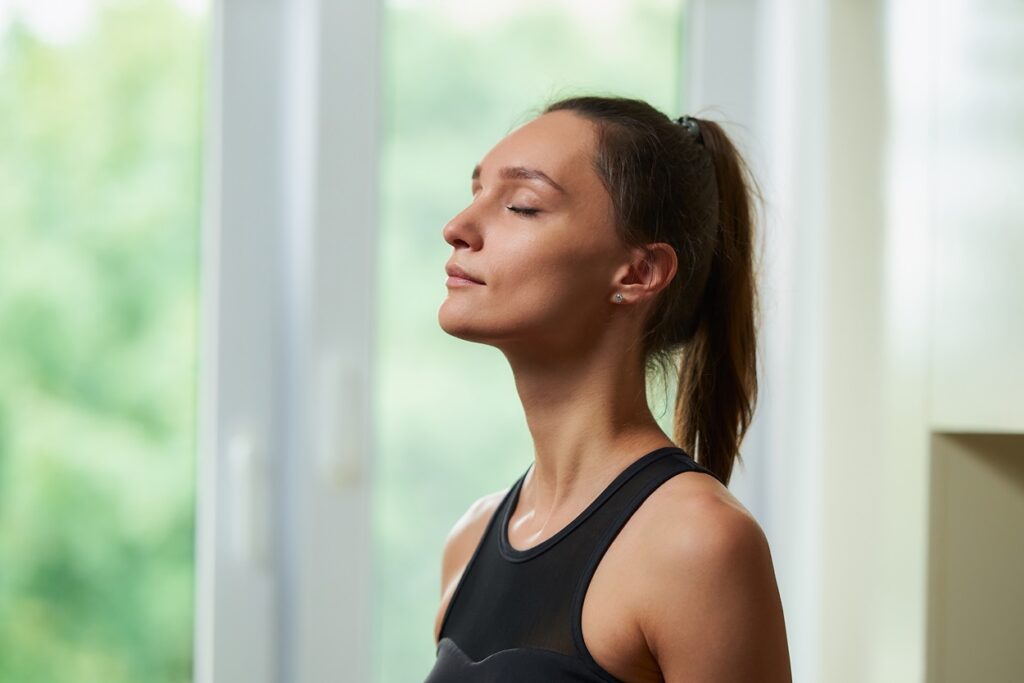Conscious Breathing for Anxiety:
Conscious breathing for anxiety is a powerful and accessible tool that can help alleviate symptoms of anxiety and stress. By focusing on and controlling your breathing, you can influence your body’s response to stress, promoting relaxation and mental clarity. This guide will explore various conscious breathing techniques specifically targeted at managing anxiety.

Understanding Conscious Breathing for Anxiety Conscious breathing involves being aware of your breathing pattern and using it to bring about a state of calm and relaxation. For those dealing with anxiety, this practice can be particularly effective in interrupting the cycle of anxious thoughts and physical symptoms associated with anxiety, such as rapid heartbeat or shallow breathing.
Basic Conscious Breathing Technique A simple way to begin is to find a quiet, comfortable place to sit or lie down. Close your eyes and start to focus on your breath. Inhale deeply through your nose, feeling your stomach expand, and then exhale slowly through your mouth. Concentrate on the sensation of air filling your lungs and then leaving your body, allowing your breathing to anchor you in the present moment.
Counting Breaths to Ease Anxiety A helpful variation is to incorporate counting into your breathing. Inhale slowly while counting to four, hold your breath for a count of four, then exhale for a count of four. This method, often referred to as box breathing, can help regulate your breathing pattern and create a sense of rhythm that is soothing for the nervous system.
Visualization Techniques with Conscious Breathing Enhance your breathing practice with visualization to deepen the anxiety-relief effects. As you breathe in, visualize drawing in calmness and peace. As you exhale, imagine releasing tension and anxiety. This combination of conscious breathing and visualization can create a powerful mental shift away from anxious thoughts.
Incorporating Movement with Breath For some, incorporating gentle movement with breathing can be beneficial. Practices like yoga or tai chi combine fluid movements with controlled breathing, which can be particularly effective in reducing anxiety and improving overall well-being.
Using Conscious Breathing Throughout the Day One of the advantages of conscious breathing for anxiety is that it can be practiced anywhere and at any time. Whether you’re feeling anxious during a meeting, in a crowded place, or before bed, taking a few moments to focus on your breath can provide immediate relief.
Adapting Conscious Breathing for Different Anxiety Levels Conscious breathing can be adapted to suit varying levels of anxiety. If you’re experiencing mild anxiety, a few minutes of deep, conscious breathing may suffice. For more intense anxiety episodes, you might need to extend the duration of your breathing practice or combine it with other relaxation techniques like progressive muscle relaxation or listening to calming music.
The Role of Consistency in Managing Anxiety For lasting impact, consistency is key. Incorporating conscious breathing into your daily routine, even during times when you don’t feel particularly anxious, can build resilience against future stress and anxiety. Regular practice helps in training your mind and body to respond more calmly to stressors.
Seeking Professional Guidance While conscious breathing is a powerful tool for anxiety management, it’s important to remember that it’s one part of a holistic approach to mental health. If anxiety significantly impacts your daily life, it’s advisable to seek guidance from a mental health professional who can offer personalized strategies and support.
Table: Step-by-Step Guide to Counting Breaths for Anxiety
| Step | Description | Tips |
|---|---|---|
| 1. Find a Comfortable Spot | Sit or lie down in a quiet place where you won’t be disturbed. | Make sure you are comfortable but alert. |
| 2. Start with Normal Breaths | Take a few normal breaths to get into a relaxed rhythm. | Focus on the natural flow of your breath. |
| 3. Inhale Deeply | Inhale slowly and deeply through your nose, counting to four. | Feel your stomach expand with the inhale. |
| 4. Hold Your Breath | Hold your breath for a count of four. | Try not to tense up during the hold. |
| 5. Exhale Slowly | Exhale slowly through your mouth for a count of four. | Imagine releasing anxiety with each exhale. |
| 6. Pause | Pause briefly after exhaling before inhaling again. | Use this moment to relax your body further. |
| 7. Repeat | Repeat this cycle for several minutes. | Aim for consistency in your breath pattern. |
| 8. Gradually Return | After completing the exercise, allow your breathing to return to normal. | Sit quietly for a few moments before resuming activity. |
Final Thoughts
Conscious breathing, particularly the counting breaths technique, offers a practical and accessible way to manage anxiety. By practicing regularly and being mindful of your body’s responses, you can harness the power of your breath to maintain a sense of calm and control in the face of anxiety.



